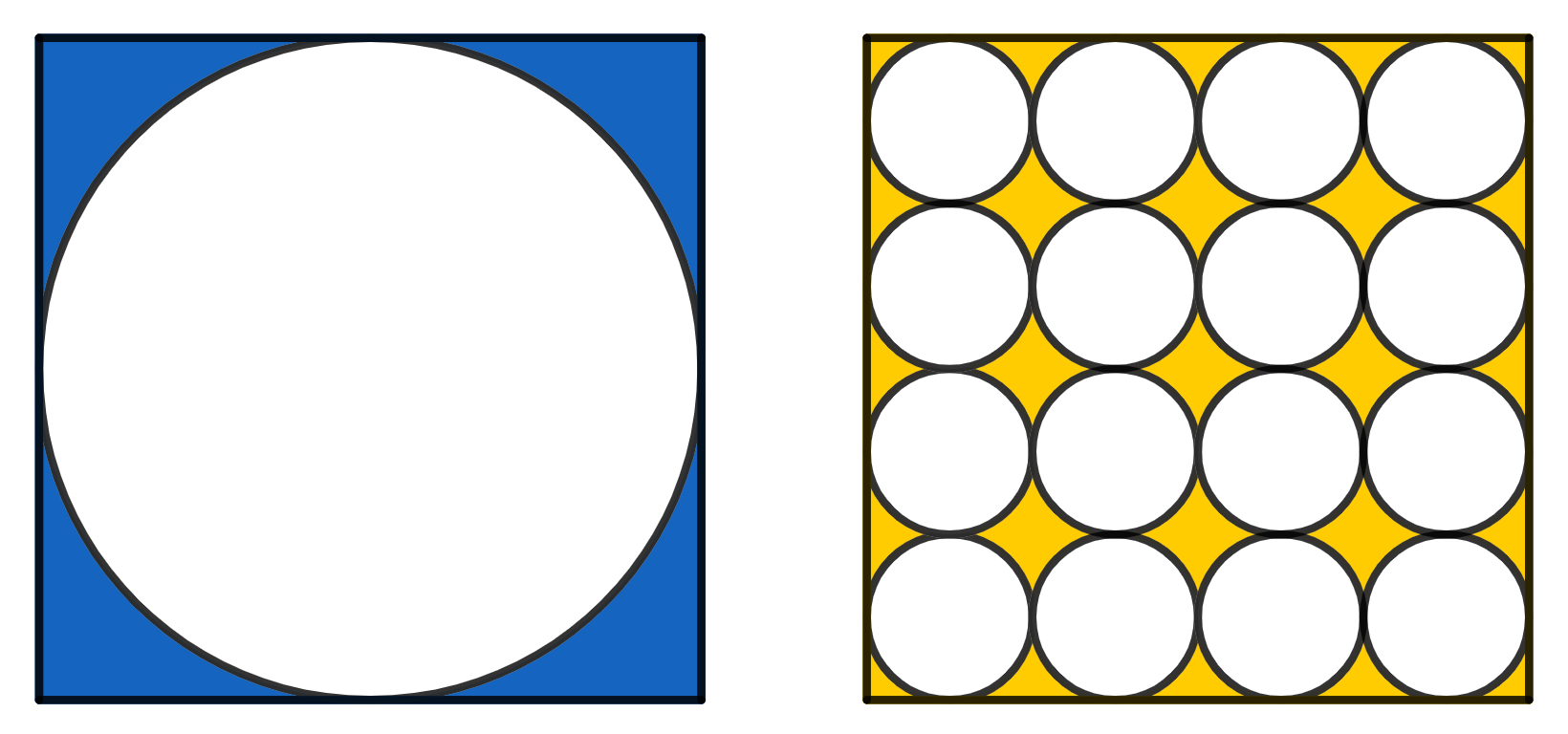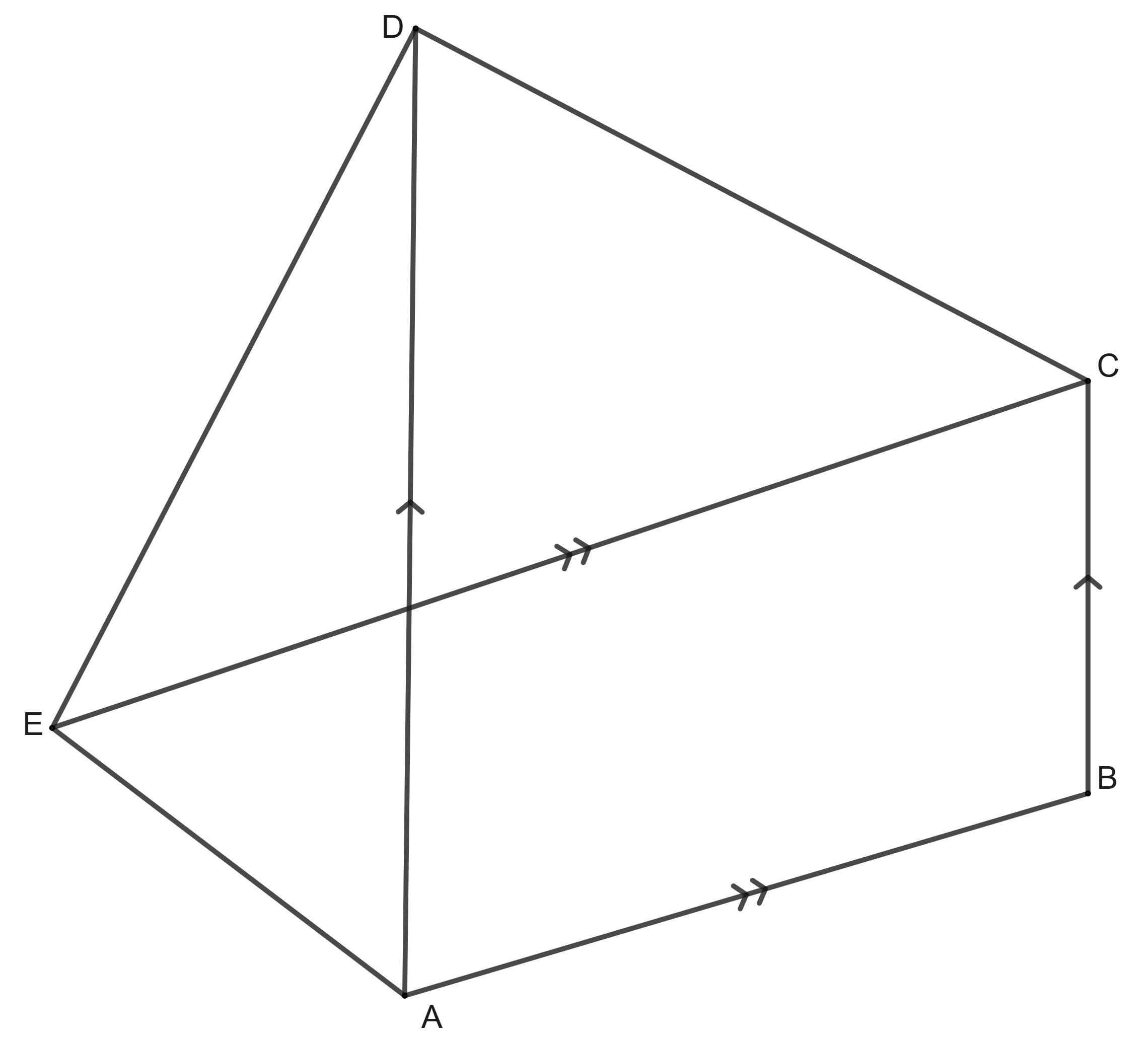Problems
On the left there is a circle inscribed in a square of side 1. On the right there are 16 smaller, identical circles, which all together fit inside a square of side 1. Which area is greater, the yellow or the blue one?

In a pentagon \(ABCDE\), diagonal \(AD\) is parallel to the side \(BC\) and the diagonal \(CE\) is parallel to the side \(AB\). Show that the areas of the triangles \(\triangle ABE\) and \(\triangle BCD\) are the same.

Prove that, for any integer \(n\), among the numbers \(n, n + 1, n + 2, \dots , n + 9\) there is at least one number that is mutually prime with the other nine numbers.
How can you arrange the numbers \(5/177\), \(51/19\) and \(95/9\) and the arithmetical operators “\(+\)”, “\(-\)”, “\(\times\)” and “\(\div\)” such that the result is equal to 2006? Note: you can use the given numbers and operators more than once.
If we are given any 100 whole numbers then amongst them it is always possible to choose one, or several of them, so that their sum gives a number divisible by 100. Prove that this is the case.
Find the locus of points whose coordinates \((x, y)\) satisfy the relation \(\sin(x + y) = 0\).
The expression \(ax^2+bx+c\) is an exact fourth power for all integers \(x\). Prove that \(a=b=0\).
The numbers \(\lfloor a\rfloor, \lfloor 2a\rfloor, \dots , \lfloor Na\rfloor\) are all different, and the numbers \(\lfloor 1/a\rfloor, \lfloor 2/a\rfloor,\dots , \lfloor M/a\rfloor\) are also all different. Find all such \(a\).
2022 points are selected from a cube, whose edge is equal to 13 units. Is it possible to place a cube with edge of 1 unit in this cube so that there is not one selected point inside it?
Note that if you turn over a sheet on which numbers are written, then the digits 0, 1, 8 will not change and the digits 6 and 9 will switch places, whilst the others will lose their meaning. How many nine-digit numbers exist that do not change when a sheet is turned over?